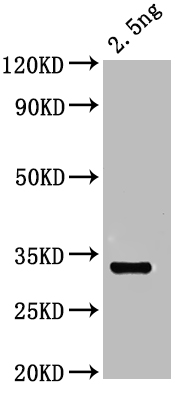The otop1 polyclonal antibody is obtained through immunization of a rabbit with recombinant Danio rerio (Zebrafish) (Brachydanio rerio) otop1 protein (406-518aa), leading to the production of specific antibodies within the rabbit's IgG-rich serum. Subsequent purification via affinity chromatography yields a highly specific otop1 antibody, which demonstrates reactivity with Danio rerio (Zebrafish) (Brachydanio rerio) otop1 protein and is thoroughly validated for its performance in ELISA and WB applications.
The otop1 is a critical component in the formation of otoconia, which are specialized calcified structures in the inner ear that play a crucial role in balance and hearing. Mutations in the otop1 gene can lead to defective otoconia formation and, consequently, disruptions in balance and auditory function in zebrafish.







